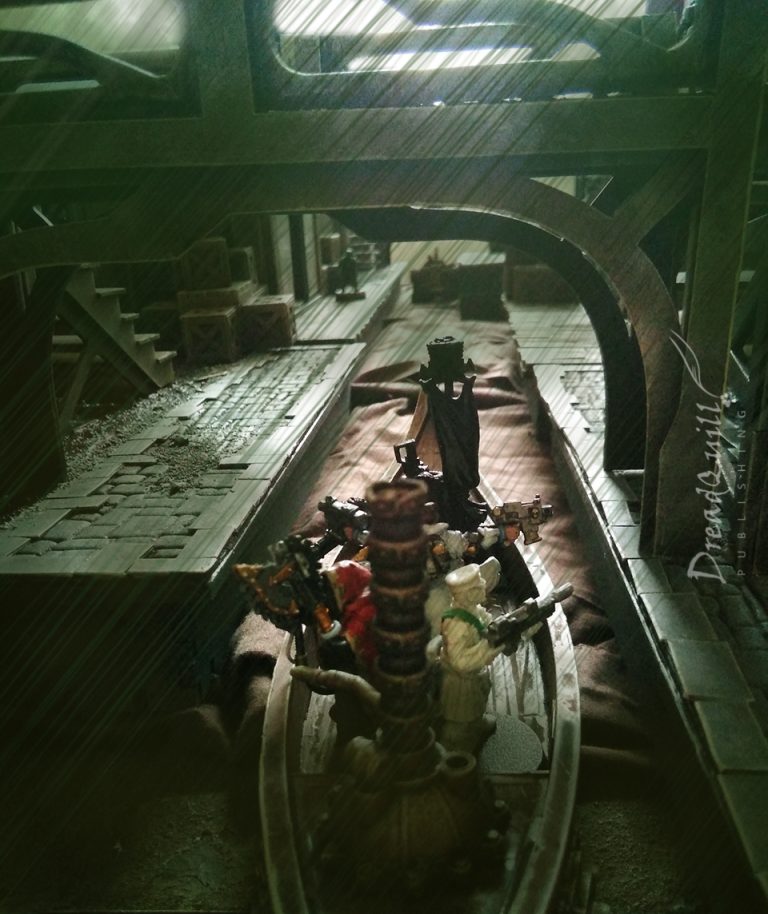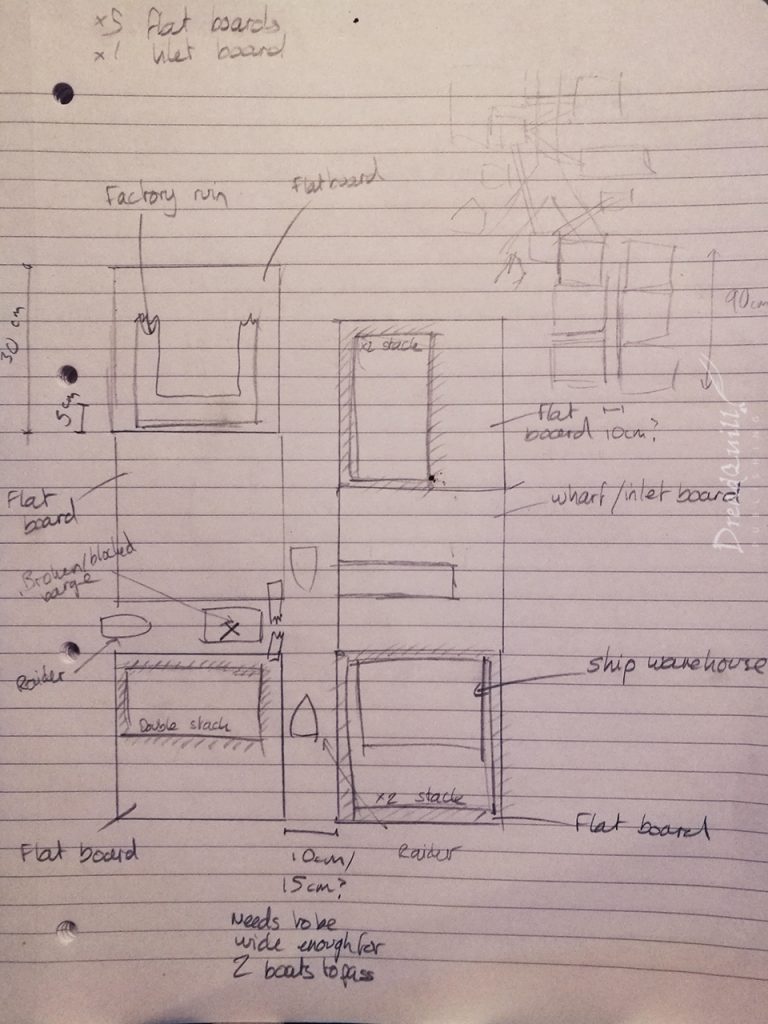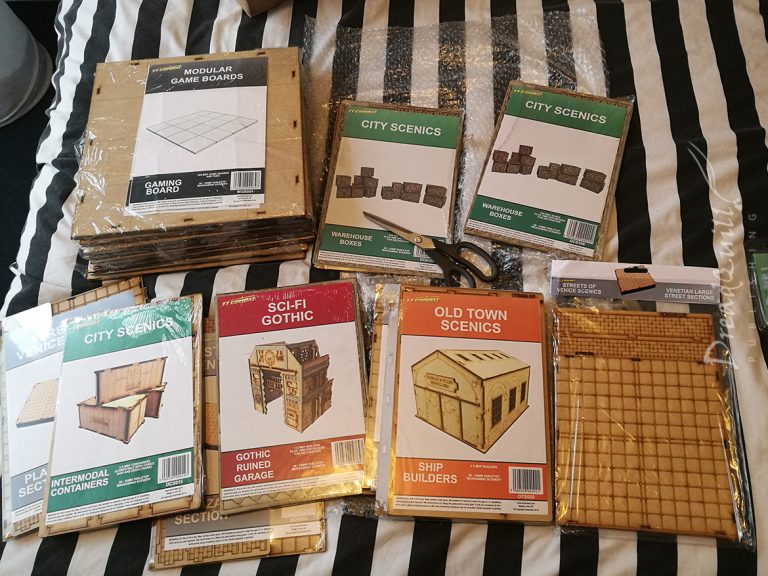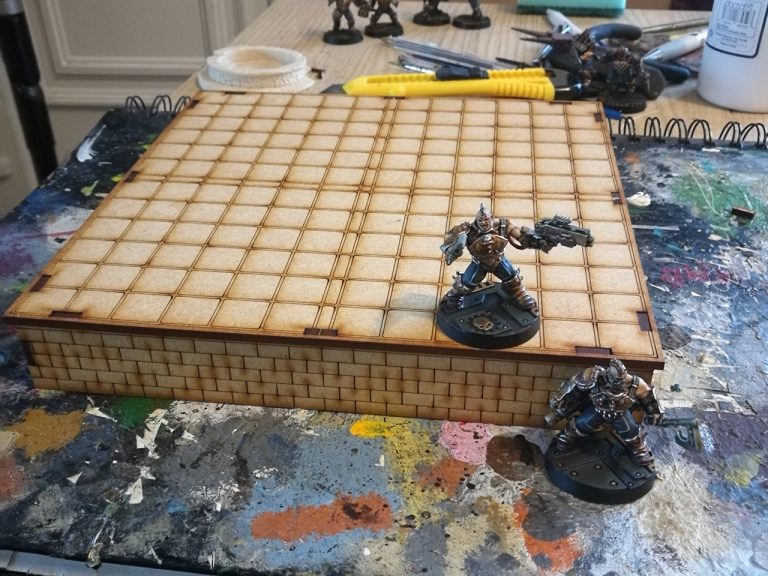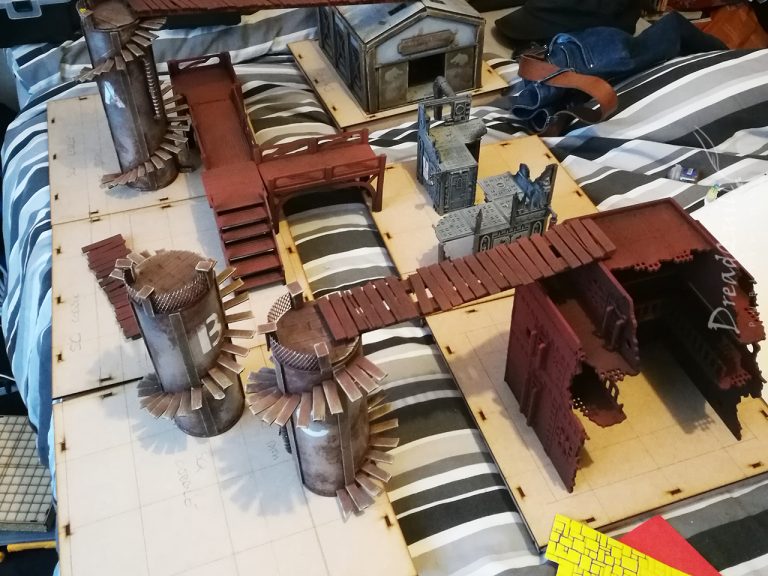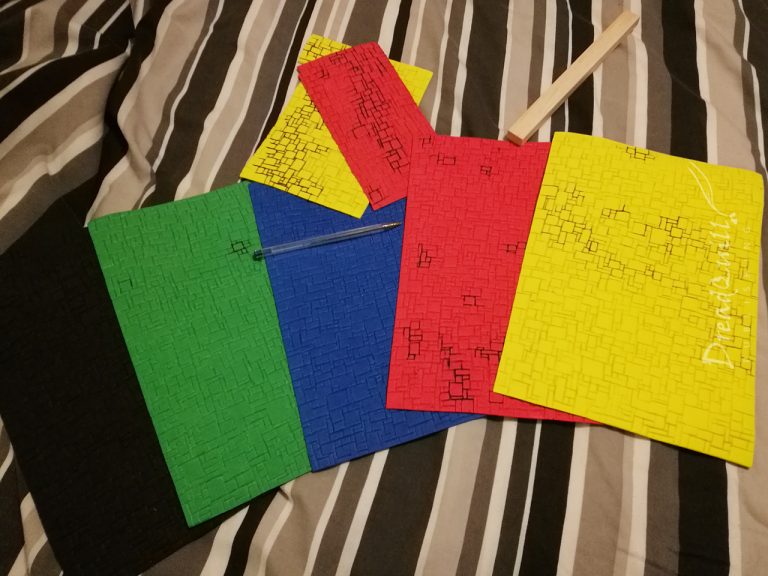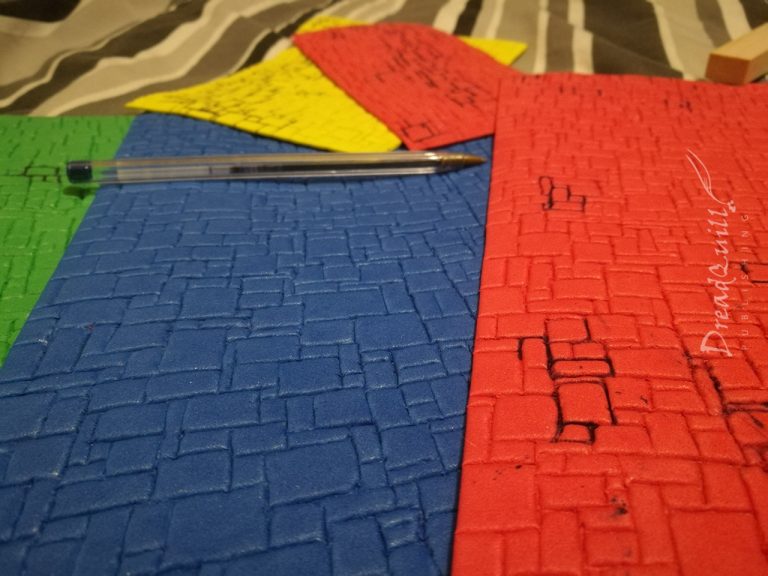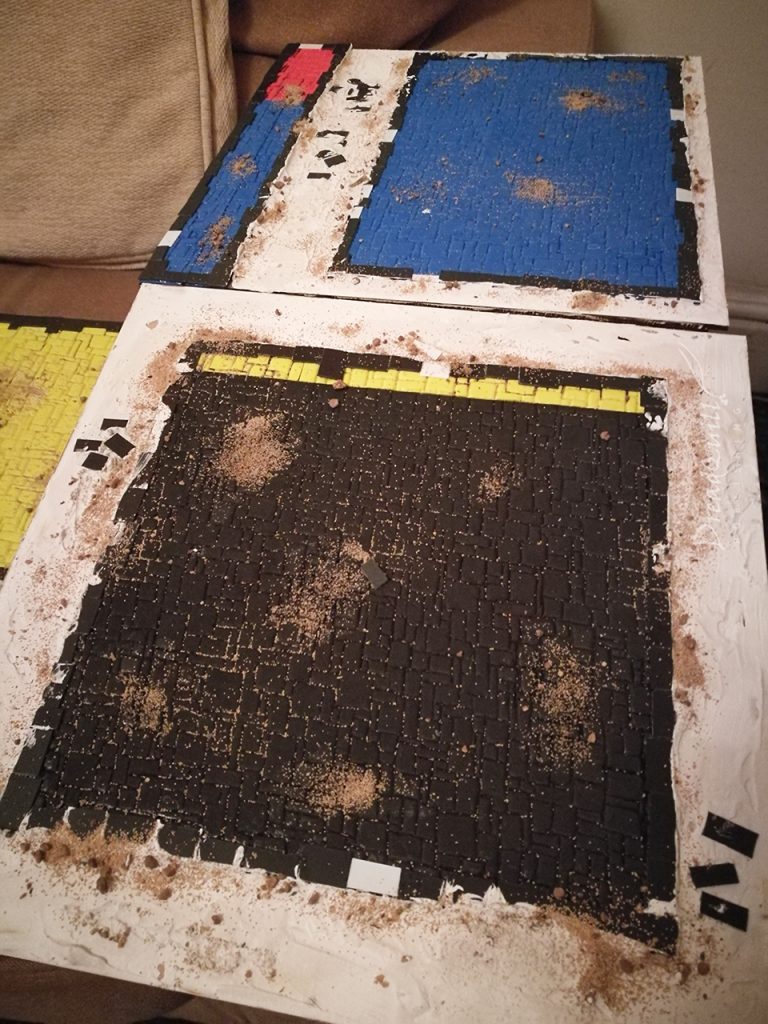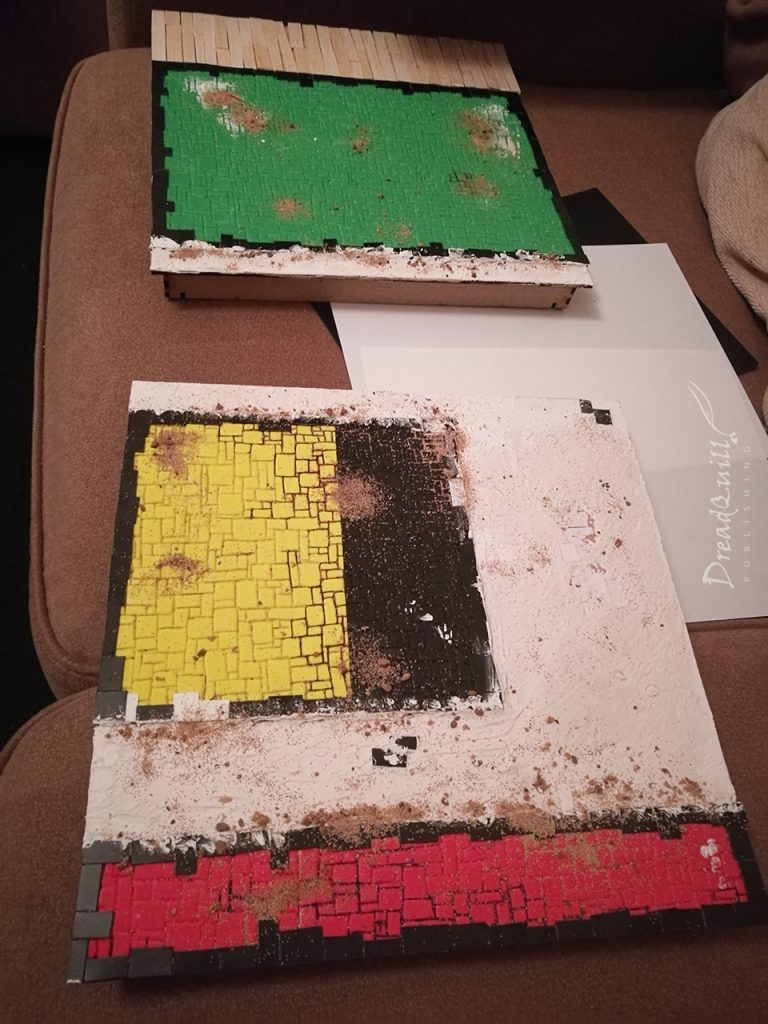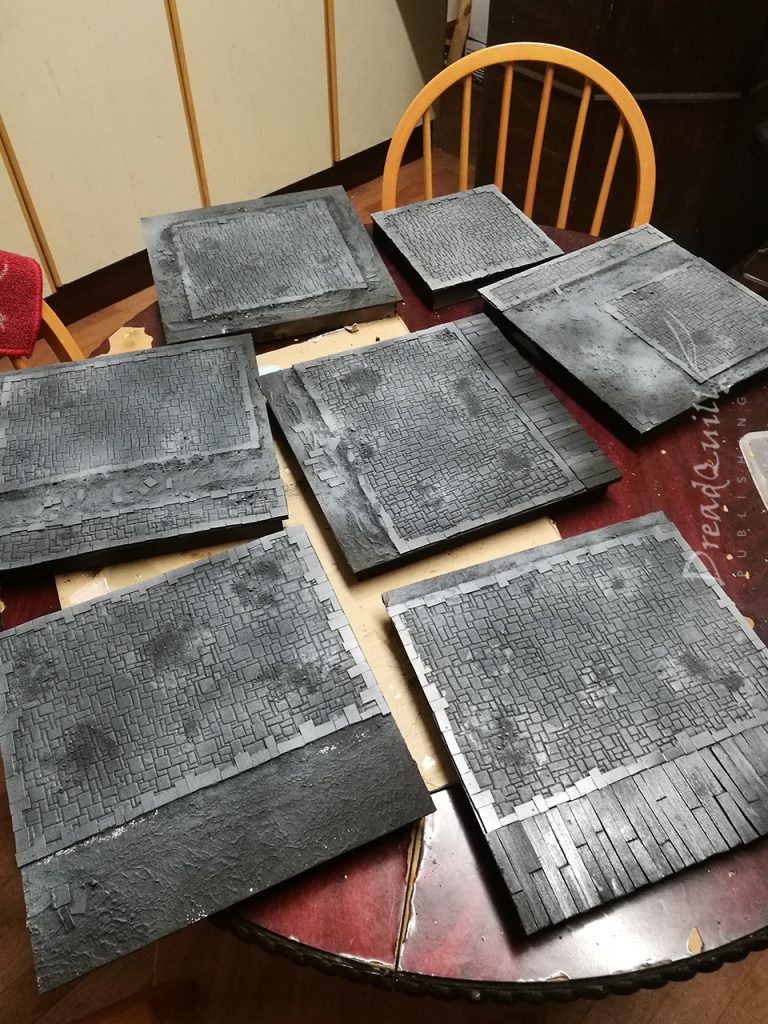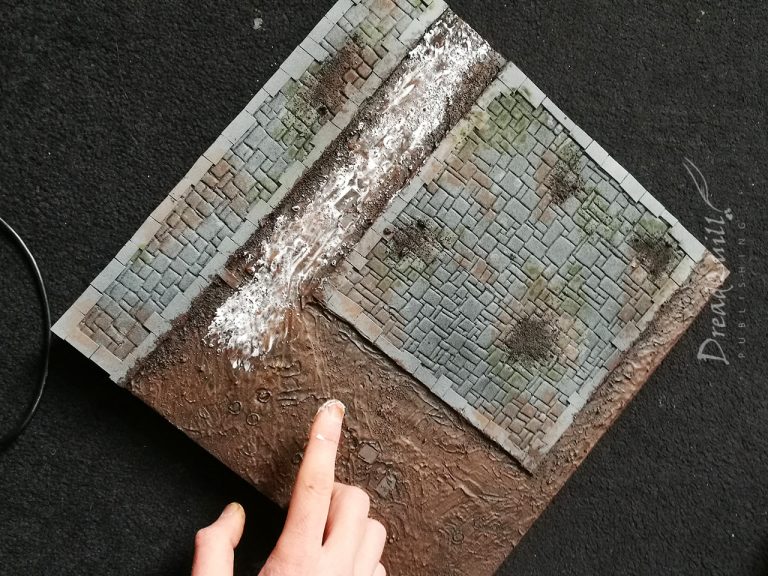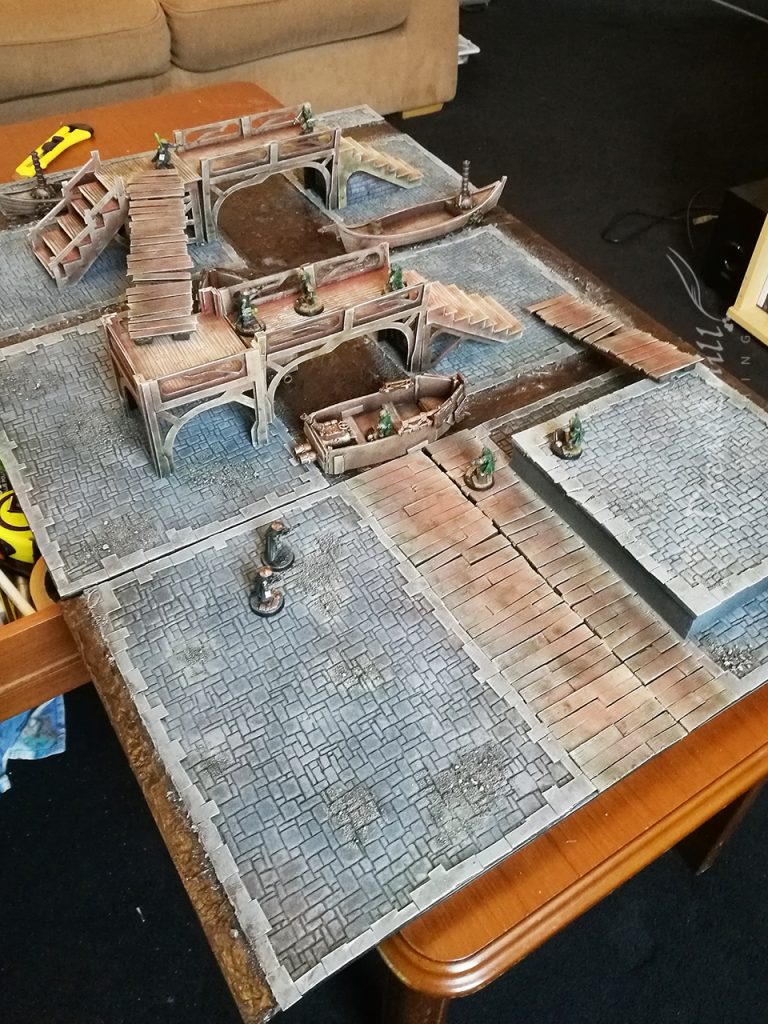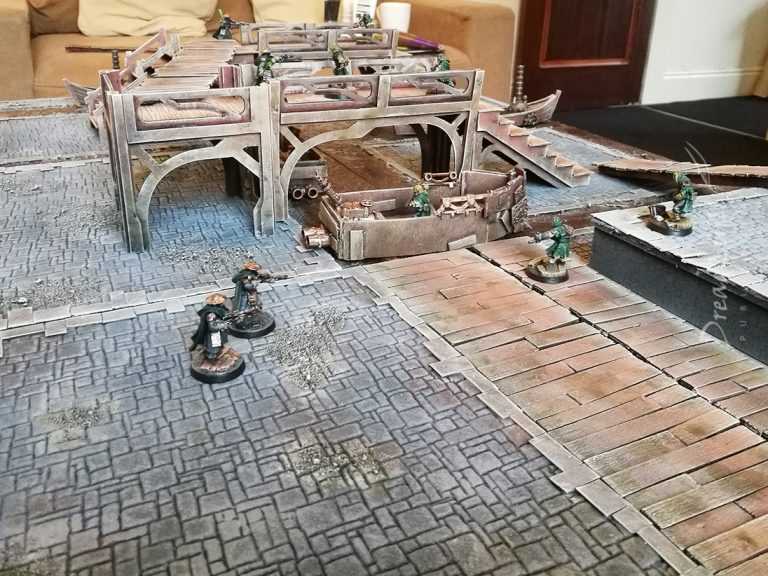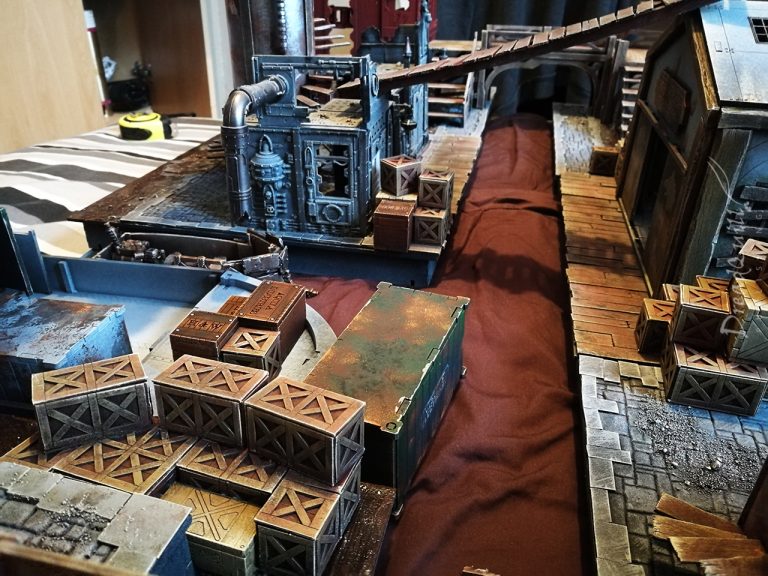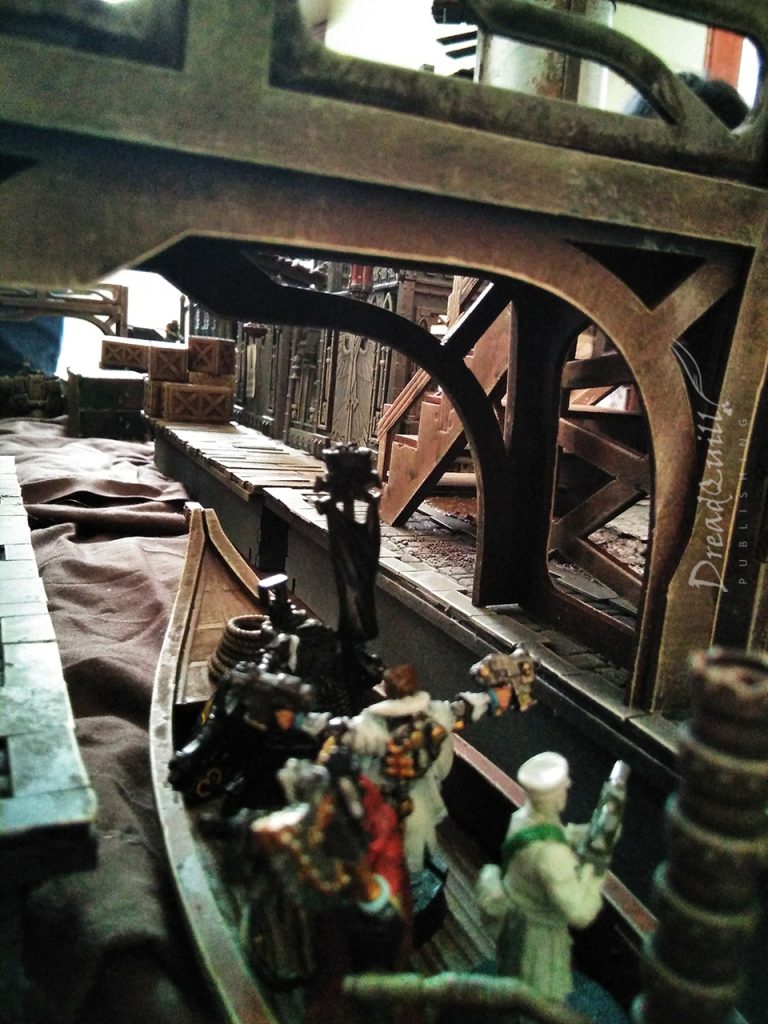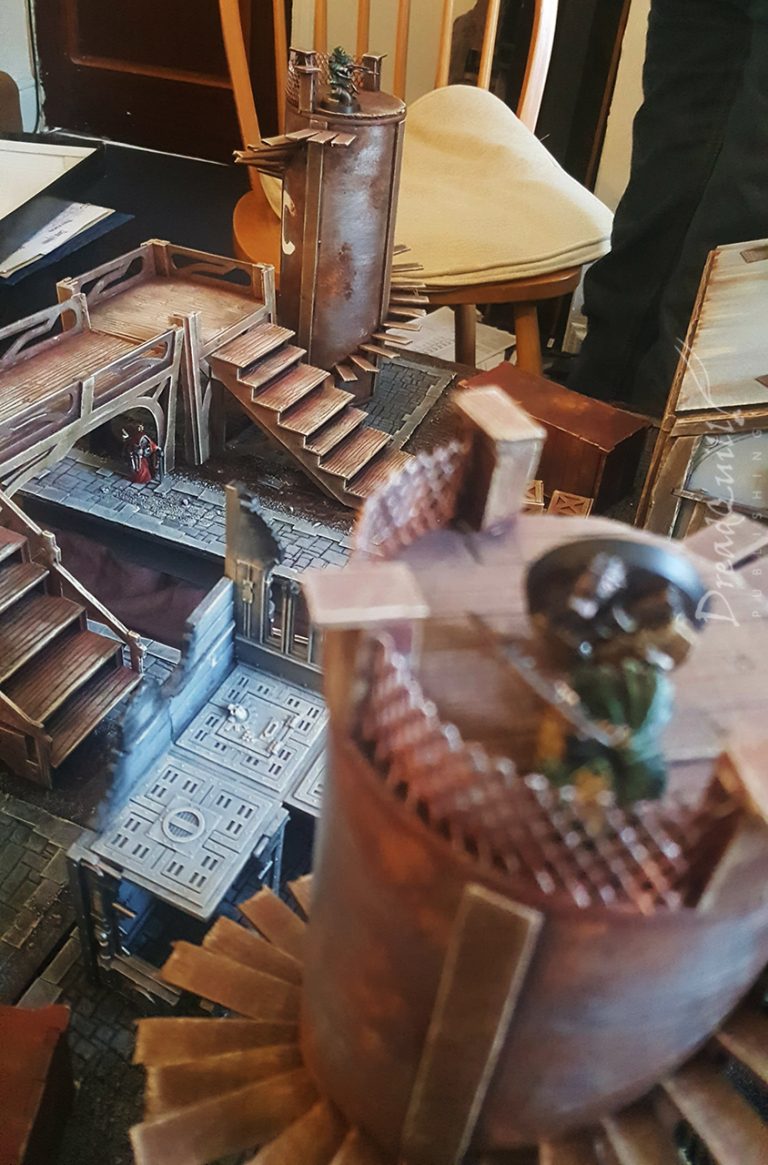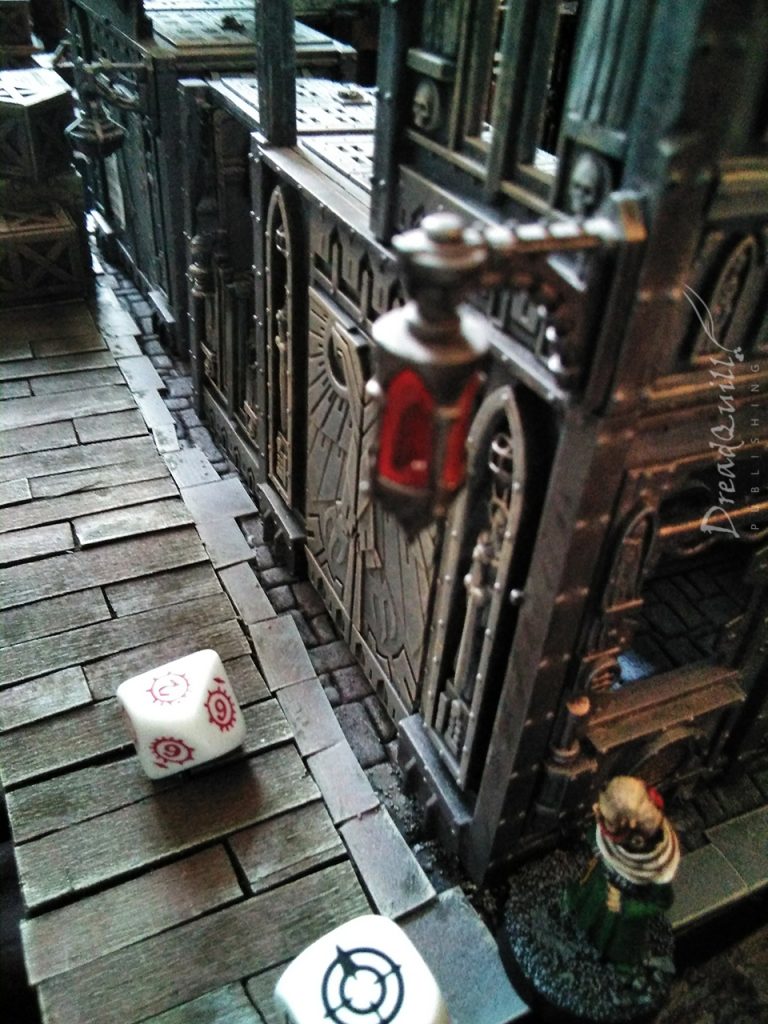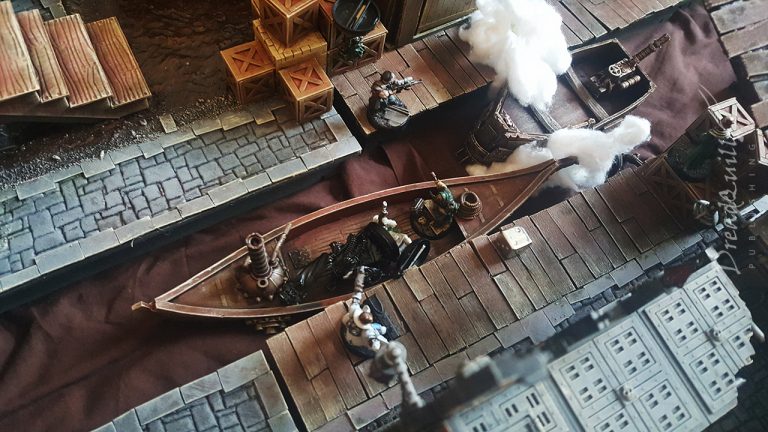“As you near the water’s edge, the corpse-coloured province of Syracuse Magna looms in the distance. A thick, dark cloud hangs above it, and the iron-black sea reeks of stagnation and raw sewage. The omnipresent drizzle turns into thick gobbets of oily water falling from the sky. The sound of the heavy rain patters loudly off your driver’s metal hat.
You hug the coastline tightly, giving enough berth to the multi-storey hab blocks that loom uncomfortably outwards over the waters. She picks an entrance to the maze of waterways and crumbling tenements that make up the district and the motor-skiff ambles lazily into a sluggish canal. A thick film of oil and offal covers the surface of the canal, and everything here reeks of rot
Despite the dilapidation and flooded tenement blocks, there is a semblance of life here. Citizens and labourers shuffle around in the shadows and under the cover of overhanging buildings. You catch the glint of every pair of eyes following you as your motor-skiff chugs down the canal.”
making plans
With a brand new chapter of our Dark Heresy campaign about to begin, set in the decaying province of Syracuse Magna, it was the perfect opportunity to pursue a dream I’d had since I had been flicking through old issues of White Dwarf as a kid – having an awesome game board.
The idea of building a modular board grew organically from the premise. Syracuse Magna needed introducing in a bang – a three-way brawl between the players, some noble House Guard and some local scum.
The campaign book I’m basing the plot off has an interesting map in the beginning – something that looked like it would be really fun to set aside most of a session for a proper honest-to-Emperor dice-fest. It had at least a dozen guys on each side, with the implication of more ‘further away’, multiple levels, heavy weapons, firebombs and boats.
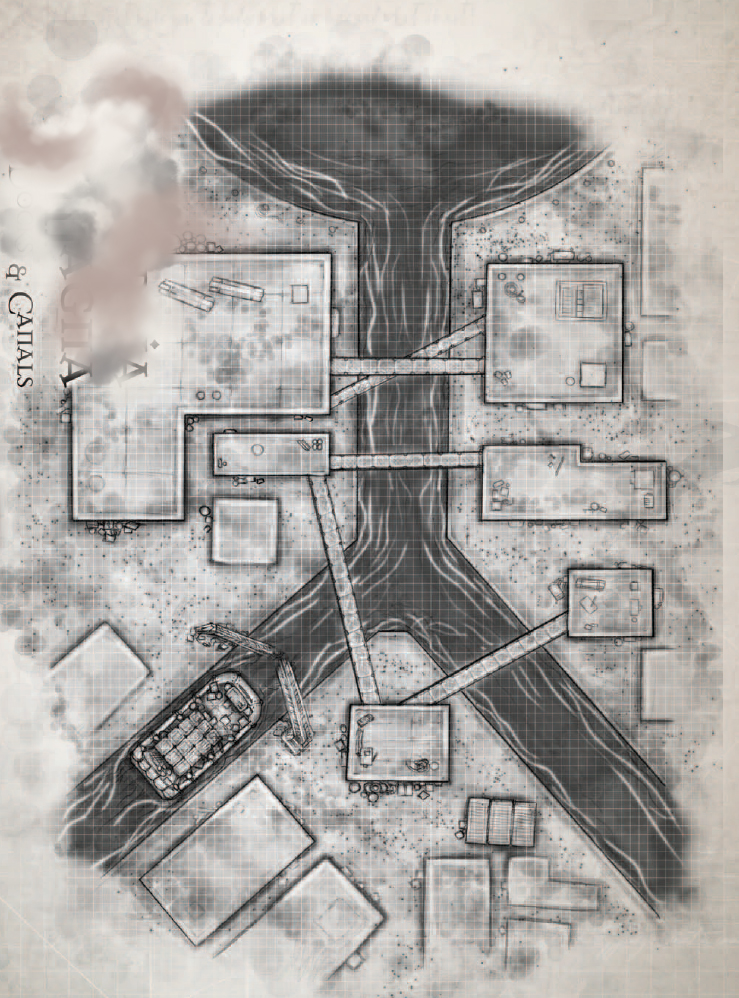
What started out as something that could be sketched on my wipe-clean hex map evolved as I started to plan the multiple levels. There needed to be guys shooting down from above, so I’d need to build walkways (obviously). Walkways would need something to connect to, so there would have to be buildings (obviously). Heck, the canal needs to be at a lower level from the rest.
At this point, it was becoming increasingly apparent that I was deluding myself into thinking I wasn’t going to build a game board. I had recently had a clear out of my old Elysian drop troopers, and that had freed up a dangerous amount of capital in the hobby fund.
The original plan was stuck to as closely as I could with the time I had given myself. Some parts fell by the wayside due to time constraints, such as the inlet board.
Originally I had wanted to go all-out and create full resin canals, but I couldn’t figure out how best to make those modular – I have no use for single-purpose terrain.
The game board from TTcombat would fit the bill – cheap and lightweight, it would be easy to store and I could get a lot of different configurations out of it. They should be stackable too, so I picked up some of the TTcombat venice plaza sections of different sizes to add a bit of height variance where appropriate.
I would pick up a bunch of different bits of scenery too, that way I’d have a tool kit of stuff that I could draw upon wherever and whenever my players decide to get into a fight. It could be an open dockside, a drowned slum or abandoned city block.
world building
Assembly began in earnest. I love the TTCombat range for its detail and ease of assembly, and everything in this pack was no different. The broken factory and shipyard went together like a dream, and the containers would be to swell my container collection to a more healthy 9 in total.
I had also assembled some silos from pringles cans which would serve to boost the height significantly and provide more things to drape walkways off.
The crates were a bit fiddly to assemble but they came together in the end, and I made the conscious decision to glue them together in lumps rather than have dozens of loose crates scattered about my board. Where I would lose a tiny amount of customisation, I would gain massively in convenience. I’ve had loose bits of terrain floating around on boards before and the novelty wears off immediately after the first accidental nudge of the table.
As I was doing more research into scenery options, I naturally gravitated towards various Malifaux resources, including the sewers walkway and downtown walkway sets by Plascraft. I can knock rickety wooden walkways together with some PVA and balsa wood easy peasy, but I can’t knock together something that looks like it wasn’t, uh, knocked together. I picked them up off ebay for cheap, favouring the un-coloured plastic sets over the pre-painted ones.
They were an absolute pain in the ass to assemble – they were made of the kind of plastic that mocks every kind of adhesive except superglue. I went through four tubes of superglue and seventeen fingertips before everything was finally assembled, and it was only when it came to basecoating I realised I should have bathed the whole set in acid and set it on fire before starting, as it took three coats of base coat before the paint would stop pooling on the oils left on the plastic. Not cool.
When they were done they looked great – they fit in to the theme beautifully, they’re lightweight, sturdy and flexible enough so they can be knocked around a bit without any paint chipping or structural damage.
I was, however, putting off the longest, hardest (and as it turned out, most damaging to me personally) part of the project – the boards themselves.
foaming at the mouth
I had looked at dozens of different game boards, trying to decide how to design the ones I now had taking up space on my bed. There were plenty of Mordheim and Malifaux game boards on Pinterest and Google Images that tickled my fancy, but none that I could realistically achieve by myself in the time frame I had allotted.
My first attempts with glue and sand were pretty abysmal and not what I wanted at all. I wanted a cobbled/tiled/flagstone look, but the only textured plasticard I could find was expensive and sold by the A4 sheet, I needed something that could cover large areas for not very much money.
I came across some enterprising individual on a Mordheim forum who had used a biro on some thin polystyrene (the kind your supermarket pizza comes on) to draw on flagstones and cobbles. Perfect! All I need to do is find some in my local area and draw some on, right?
Turns out, nowhere sells such a thing, and I wasn’t about to buy and unwrap a dozen pizzas. I finally found some sheets of kids’ craft foam in my local book store and picked up two packs just to be sure. It was the perfect material – much tougher than polystyrene but that just meant I had to push a bit harder. Should take the strain of gaming more, right?
You have to press really really hard with a biro to get the indentation. I broke the ball out of four pens making these, and the ones that didn’t lose their ball will never write again due to weird internal rupturing of the ink cartridge.
By the end of the ordeal I couldn’t hold a pen for a few days afterwards. I had lost feeling in the end of my thumb from gripping the pen so tightly and I had a huge blister on my middle finger from where the pen rested. Over a month later I still don’t have very much feeling in my thumb any more, and the blister has turned into a huge callous. Yay hobbying!
Aside from that though, the sheets came out great. For what was essentially 25p a sheet, they were great value for money if you don’t value physical hand health that much. Time to stick them to things!
The sheets were carved up in accordance to the random scribbles I had made on the wooden boards. Harking back to my brief, I wanted them to be usable in pretty much any arrangement, so they needed to be (relatively) even all the way round.
I also wanted to have a conscious divide between cobbled areas and muddy paths where the roads have worn away decades ago. Making these tiled areas variable shapes and sizes meant depending on the arrangement of boards, you could get wide streets, tiny claustrophobic alleyways or snaking dog-legs between buildings.
A few of the boards went against the brief and I edged them with lollipop sticks as a boardwalk or dockside. I needed a dock in the first fight, and I didn’t have the time to figure out how to carve up one of these tiles and make an inlet. Perhaps a project for another time.
The mud was made with a nice big pot of polyfilla I had lying around in powder form at home. When mixed up in some old Chinese tupperware, you can apply it liberally with finger and spoon to create some weird shapes. Some tiles and sand pushed into it for texture helped finish it off.
With all the boards in strange primary colours, things were beginning to look a bit Legoland. I was happy that I had got this far and I was apprehensive about applying colour to them. If the paint didn’t take, I was out of options.
Duncan be praised
Well bugger me, they came out better than I’d ever dreamed they would. I killed off quite a few brain cells applying the black undercoat – I lost count of how many rattle cans I went through over the course of this project.
A light dusting of grey over the black helped break up the big chunks and would make painting easier down the line.
The wood sections would get a light dusting of brown spray and painted up the same way as the other wood sections of the map. The cobblestones were highlighted with a slightly lighter grey, and splodged liberally with brown and green washes applied with a spongy bit snipped out of a miniatures case.
A final highlight was drybrushed with Rotting Flesh. In all the descriptions of Magna it would be described as a decaying, unhealthy place, and everything from the wood to the stone to the metal would have a slightly unhealthy tinge to it.
The path sections would get a thick’n’heavy coat of brown. It was time to get muddy.
I picked up some water effect stuff to make bases for the Undertow and this was a great opportunity to use some more of it up. It is very thick, and used for creating water effects like splashing water, so it would be perfect for giving me an unpleasant moistness to my mud. It would also double as a sealant for the polyfilla, as I discovered very quickly that despite it looking great and being super easy to work with, it chips like a bitch.
I applied it liberally and smooshed it into the surface of my board. trying to let it pool in the crevices and get wiped off the raised areas so it would look more like standing water.
I had my concerns at this point that it would look more like a river or literal standing water rather than mud, then realised it didn’t matter. It could be used for either depending on what I might need!
The stuff was touch-dry in less than an hour, but I let it dry overnight just to be safe.
The test fit
When everything was dry, next day I pushed the boards together, sprinkled some terrain on it and set up my antagonists for a photo shoot. I think the pictures speak for themselves.
Yeah, I was pretty fuckin’ chuffed with how these came out. Everything just worked. I was utterly impressed by my ability to paint all the wood in the same dead fleshy colours, despite many of these projects being painted months apart and in some cases, very drunk. The multiple layers worked really well too, something I was going to revisit later on and finish off more of. Everything looked swell, and with only one night to go before the big day, it couldn’t have worked out better.
It was time to assemble the board ready for the final fight.
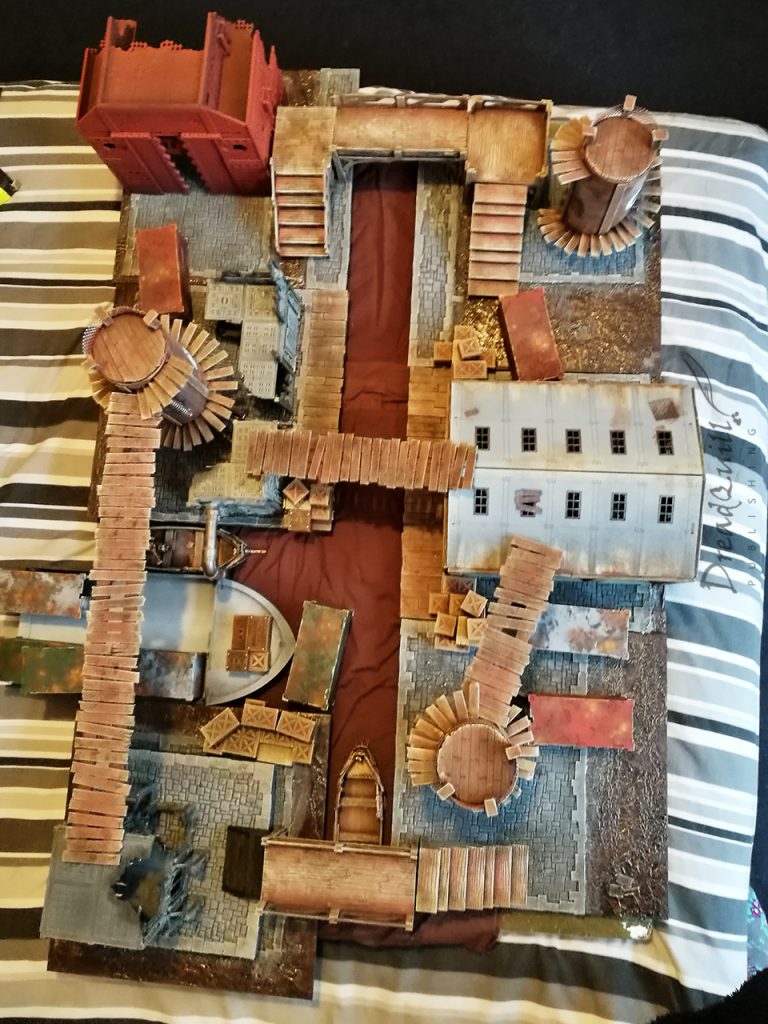
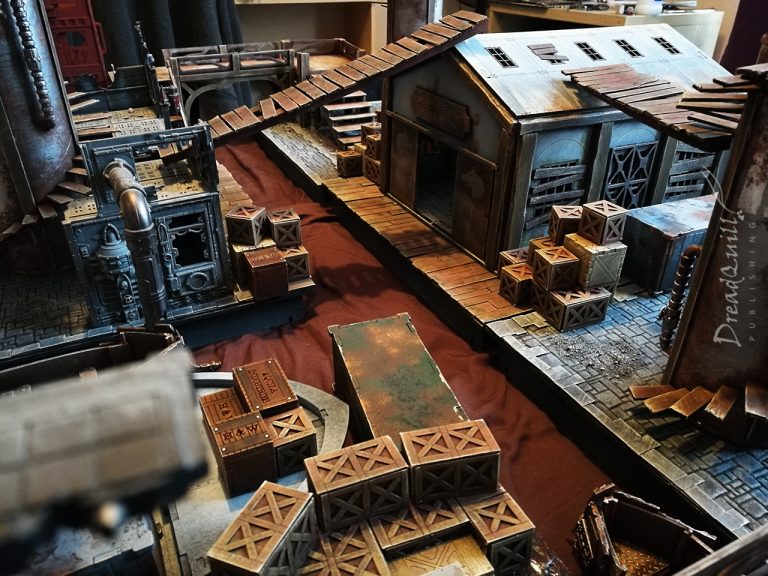
Death in magna
I stuck as close as I could to the original map, and made concessions for the areas that didn’t work. I didn’t have the time (or inclination) to make ANOTHER boat, so we used the nose section from a previous TTcombat purchase which actually turned out great.
The core structures were shuffled around too – the warehouse in the far corner didn’t fit on the tile I had put there and was better suited to being more central so it could be interacted with more. I commandeered some of my old 40k scatter terrain that was most fitting to the scene too – a few bits of ruined building that would stand in for, well, anything really. The one in the bottom left of the map would house a cheeky chappy with a hunting rifle that would just be a massive dick for the whole fight.
The rest of this post is just images, vaguely structured in the order they were taken. I lament not taking more pictures or documenting it better, but luckily many of my players took plenty of snaps on their phones.
So, for your pleasure, I present one of my life-long dreams achieved;
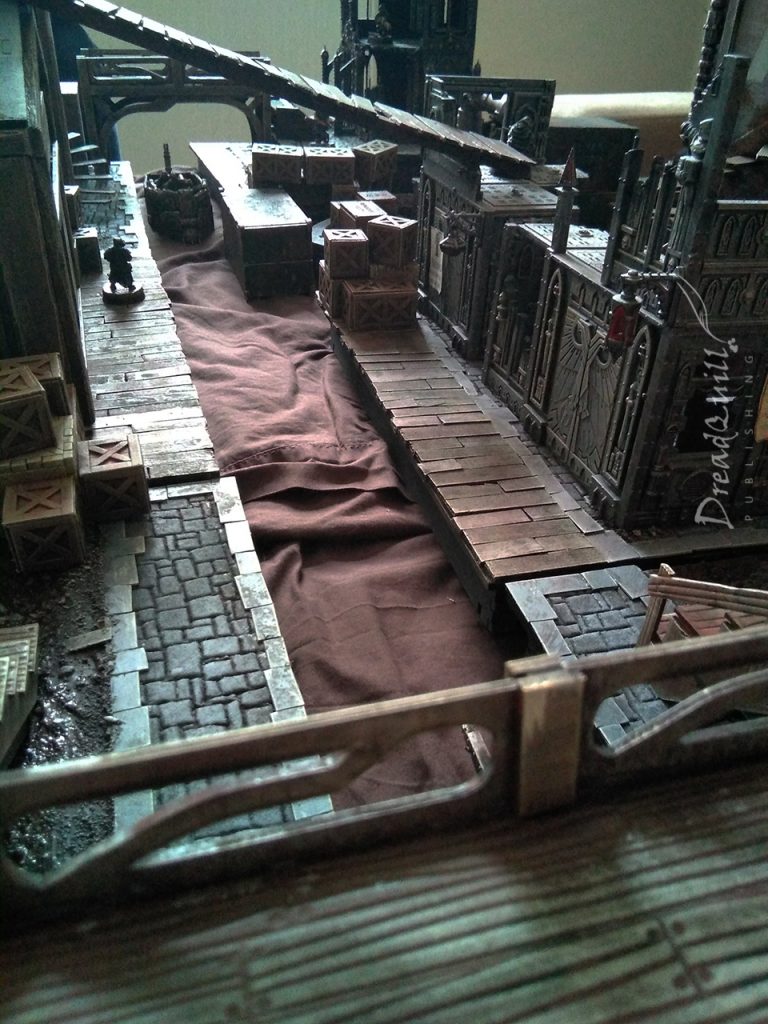
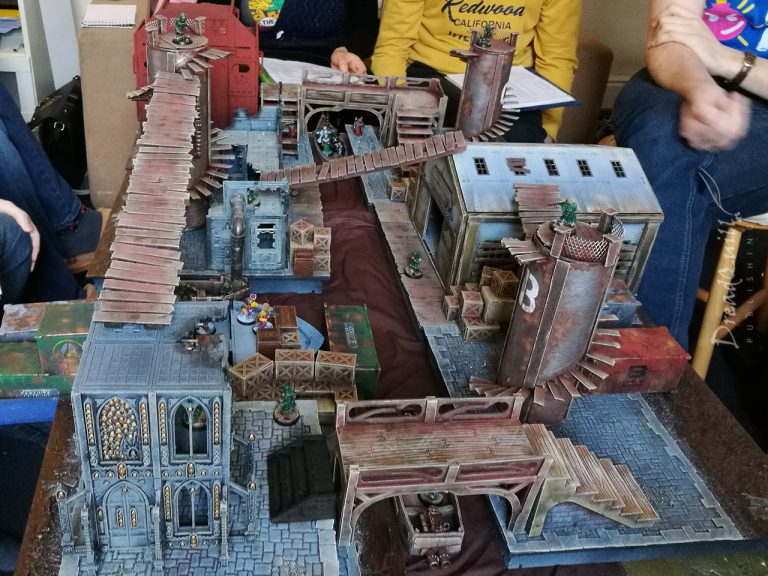
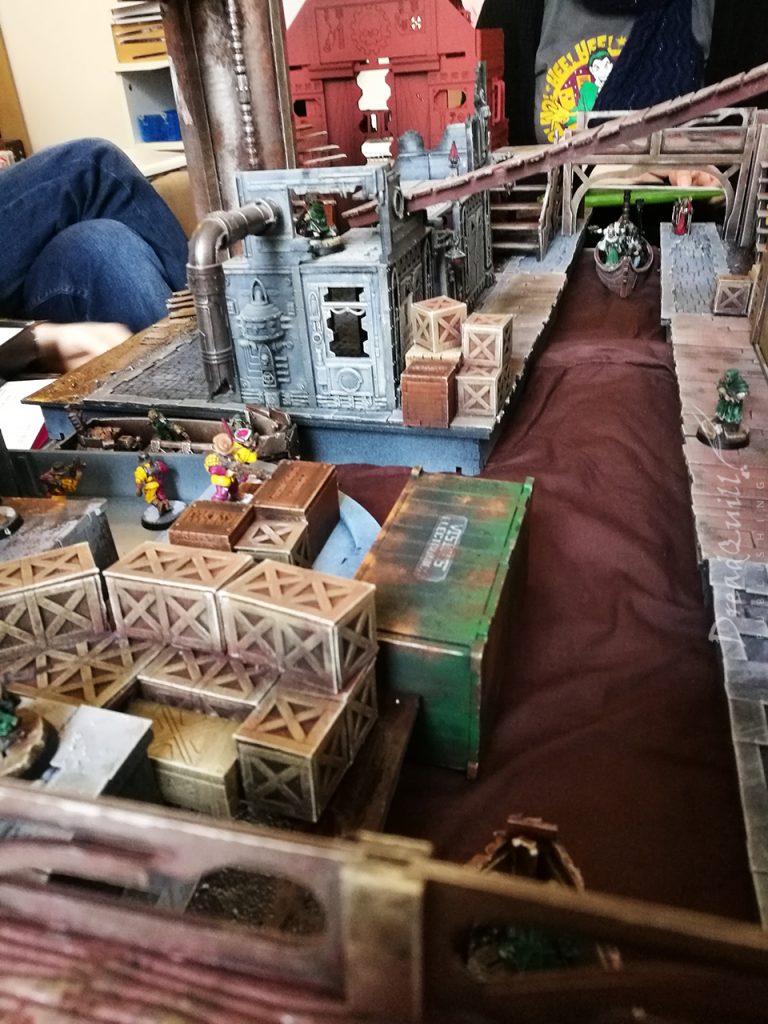
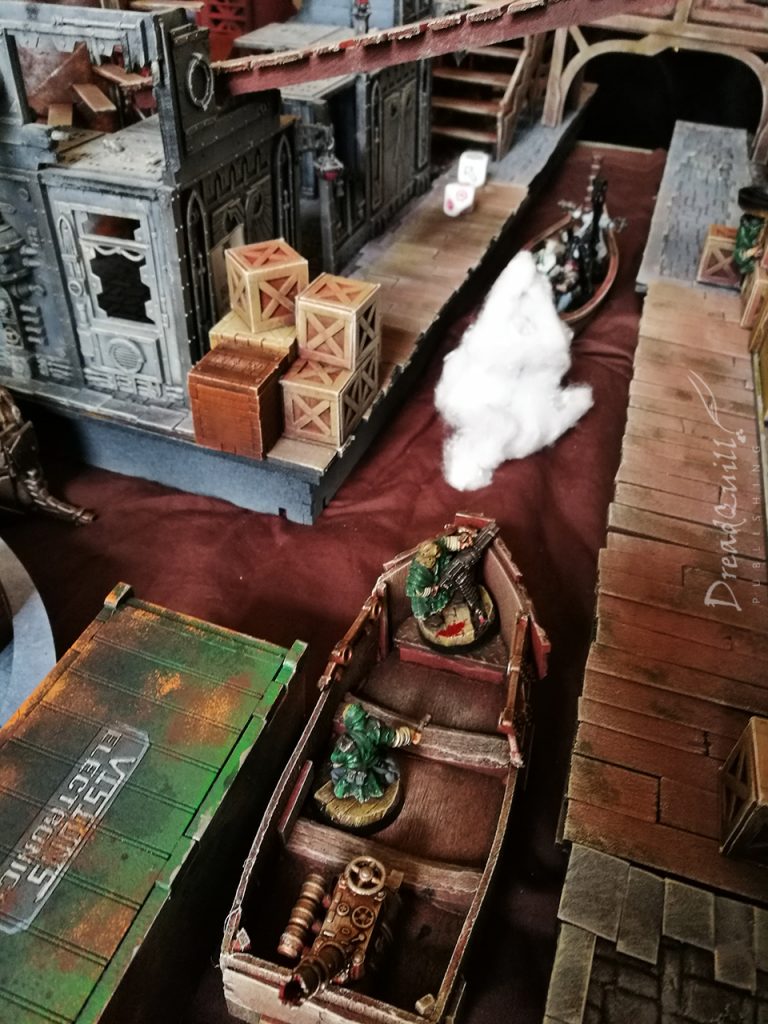
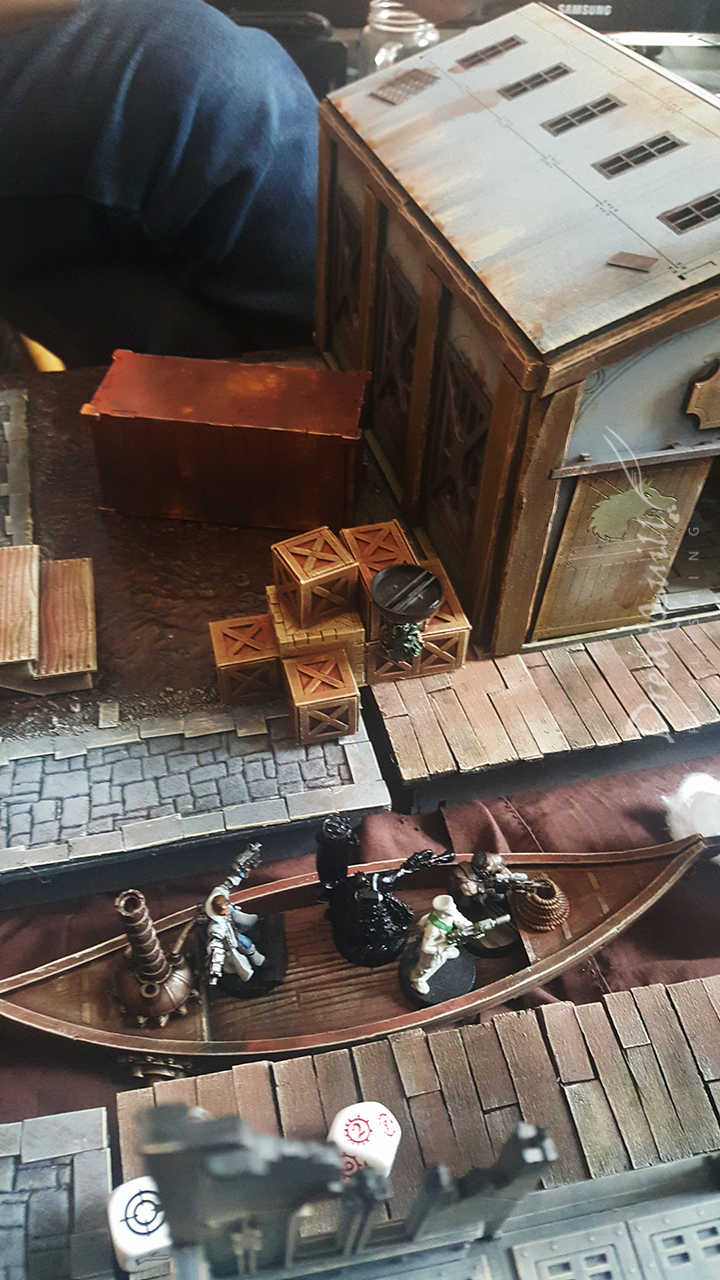
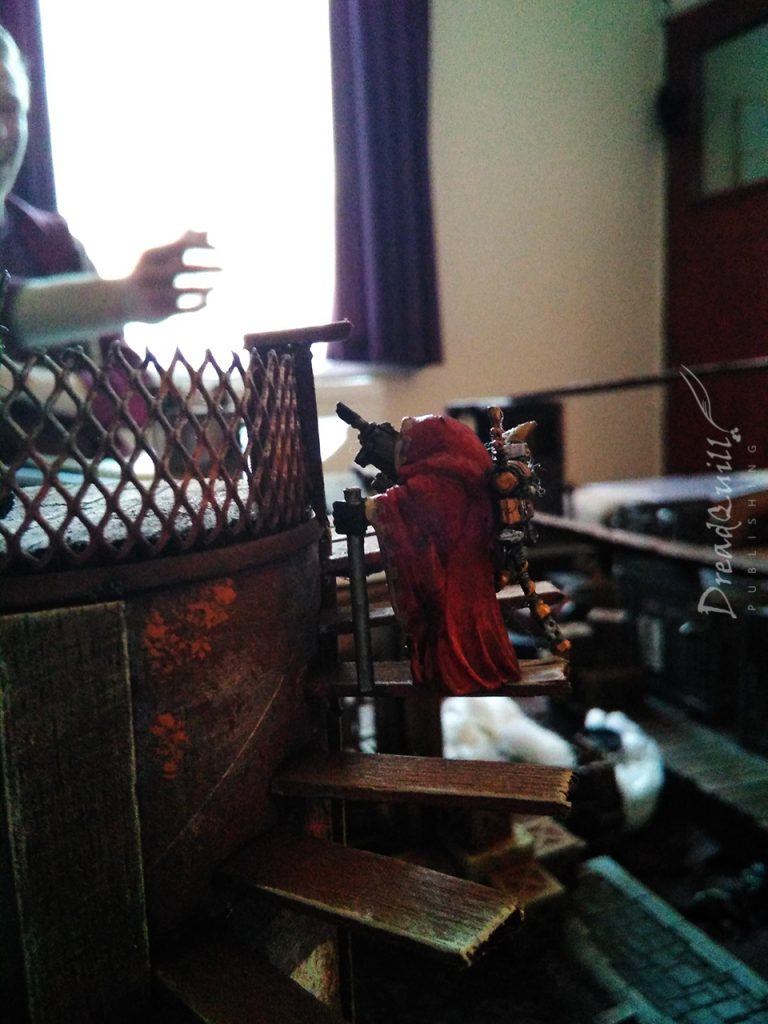
Our brave naval Acolytes eventually all managed to get off their sinking ship (hopefully not too heavy-handed a metaphor for future endeavours…) and brutally murder some starving poor people trying to feed their families see off the criminals and protect the shipment.
The day was won by the Acolytes, and they even won grudging thanks from the House Guard protecting the shipment. It sounded like everyone had as much fun playing as I had building, and we all learned some valuable lessons about the importance of having Willpower as your dump stat, why shotguns with the Scatter trait are so deadly, and just how long you can stay on a sinking ship before your team-mates start to try and bounce grenades off your head.
I’ll get you next time, Acolytes!


